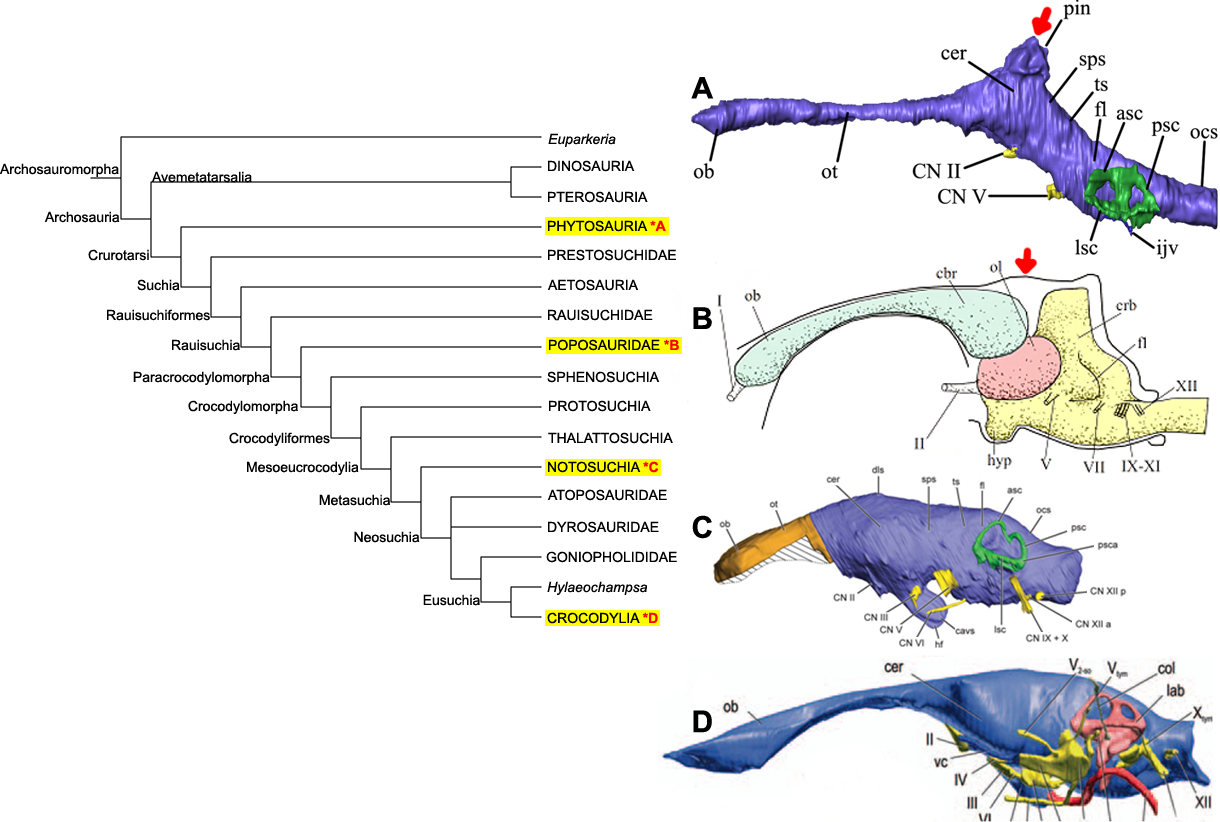
Adaptations - Form & Function
Unlike the classification of species, all of the authors researched for this project agreed that phytosaurs are crocodile-like. The majority of the morphological research is centered on skulls; this is likely due to the largely incomplete fossils that are found. Some unique synapomorphies include pronounced external, dorsal nares (nasal openings) and extreme heterodonty (different types of teeth; Long and Murry, 1995; Stocker and Butler, 2013). The unique location of the dorsal nares and comparative skull endocasts conclude the absence of a vomeronasal system, a pheromone processing sensory system prevalent in tetrapods (Senter, 2002). The absence of the vomeronasal system means phytosaurs used other methods of communication than pheromones, but more on that under the page on Reproduction. There is some evidence that dimorphism between sexes may have existed in some species, with the majority of the skulls being crested except for those of young females (Ballew, 1989). Apart from skull morphology, phytosaurs were also covered in osteoderms, or hard, scale-like armor, likely to protect themselves from some of the other large carnivores of the Late Triassic (Stocker and Butler, 2013).
Below is a comparison of cranial endocasts which shows the simularities between Smilosuchus (A) and modern crocodylia (B). (Halloway, 2011).
